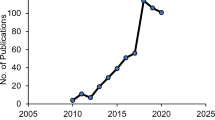Abstract
The corrosion of reinforcements that results from chloride iron erosion and freeze–thaw damage is the key cause of concrete material failure. Indoor accelerated freeze–thaw cycling tests on reactive powder concrete are carried out in this study, and the mass-loss rate (MLR), relative dynamic-elastic modulus (RDEM), and compressive strength are measured in order to evaluate its durability. In addition, the microstructure and composition of the reactive powder concrete during the chloride-salt freeze–thaw cycles were analyzed using scanning electron microscopy, energy-dispersive spectroscopy, and mercury-intrusion porosimetry. The results show that the reactive powder concrete was durable under chloride freeze–thaw cycling. Furthermore, the values of MLR and RDEM indicated that the actual method is not suitable for reactive powder concrete and should be modified, and that ettringite-type erosion products are generated during the freeze–thaw cycles. The conclusions in this study are valid for specific reactive powder concrete mix.








Similar content being viewed by others
Abbreviations
- MLR:
-
Mass-loss rate
- RDEM:
-
Relative dynamic-elastic modulus
- SEM:
-
Scanning electron microscope
- EDS:
-
Energy-dispersive spectroscopy
- MIP:
-
Mercury-injection porosimetry
References
Wang Y, An MZ, Yu ZR et al (2013) Research on the mechanical properties of reactive powder concrete: a review. Concrete 12:21–26
Tam C, Tam VW (2012) Microstructural behaviour of reactive powder concrete under different heating regimes. Mag Concr Res 64(3):259–267
Ji YY (2011) Durability research of reactive powder concrete in marine environment. Harbin Institute of Technology, Harbin
Shaheen E, Shrive NG (2006) Optimization of mechanical properties and durability of reactive powder concrete. ACI Mater J 103(6):444–451
Lee MG, Wang YC, Chiu CT (2007) A preliminary study of reactive powder concrete as a new repair material. Constr Build Mater 21:182–189
Zheng W, Li H, Wang Y (2012) Compressive behavior of hybrid fiber-reinforced reactive powder concrete after high temperature. Mater Des 4:403–409
Yiğiter H, Aydın S, Yazıcı H et al (2012) Mechanical performance of low cement reactive powder concrete (LCRPC). Compos B 43:2907–2914
GB T (2010) Standard for test methods of long-term performance and durability of ordinary concrete. Beijing, China: China Building Industry Press Pub.
Wu ZM, Chen DF, Gao PW et al (2011) Effects of chloride salt and freezing-thawing on deicer-scaling resistance of concrete. Bull Chin Ceram Soc 6:1245–1248
Wang Y, An MZ, Yu ZR et al (2014) Durability of C50 high performance concrete under the coupled action of chloride salt erosion and freeze-thaw cycle. Chin Railw Sci 35(3):41–46
Taylor HFW, Famy C, Scrivener KL (2001) Delayed ettringite formation. Cem Concr Res 31:683–693
Ma HZ, Li ZQ (2007) Ettringite formation in concrete. Build Sci 23(11):105–110
Brown PW, Bothe JV (1993) The stability of ettringite. Adv Cem Res 5(18):47–63
Glasser FP, Damidot D, Atkins M (1995) Phase development in cement in relation to the secondary ettringite problem. Adv Cem Res 7(26):57–68
Yang R, Lawrence CD, Lynsdale CJ et al (1999) Delayed ettringite formation in heat-cured Portland cement mortars. Cem Concr Res 29:17–25
Fu Y, Xie P, Gu P et al (1994) Effect of temperature on sulfate adsorption/desorption by tricalcium silicate hydrates. Cem Concr Res 24(8):1428–1432
Divet L, Randriambololona R (1998) Delayed ettringite formation: the effect of temperature and basicity on the interaction of sulphate and C-S-H phase. Cem Concr Res 28(3):357–363
Acknowledgments
This work was a part of the projects financially supported by the National Natural Science Foundation of China (NSFC) Grant Nos. 51278039 and 51108019 and the Beijing Higher Education Young Elite Teacher Project (YETP 0563). The authors gratefully acknowledge the financial support received from the NSFC and YETP.
Author information
Authors and Affiliations
Corresponding author
Rights and permissions
About this article
Cite this article
Wang, Y., An, Mz., Yu, Zr. et al. Durability of reactive powder concrete under chloride-salt freeze–thaw cycling. Mater Struct 50, 18 (2017). https://doi.org/10.1617/s11527-016-0878-5
Received:
Accepted:
Published:
DOI: https://doi.org/10.1617/s11527-016-0878-5




